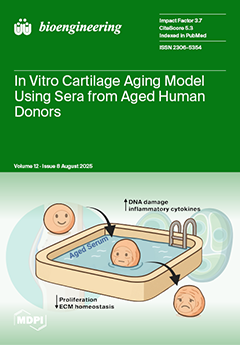Accurate monitoring of mastectomy skin flap (MSF) perfusion is critical, especially in patients with darker skin pigmentation at higher risk of misdiagnosed tissue ischemia. Near-infrared spectroscopy (NIRS) devices, such as SnapshotNIR, offer real-time tissue oxygen saturation measurements (StO
2), but their accuracy across skin pigmentation levels remains unexplored. This quasi-experimental study included 33 patients undergoing mastectomy. MSF edge ΔStO
2, defined as preoperative minus postoperative StO
2, was measured using SnapshotNIR device (Kent Imaging, Calgary, AB, Canada) pre- and post-mastectomy. By definition, a positive ΔStO
2 indicates a decrease in tissue oxygenation, while a negative ΔStO
2 indicates an increase relative to baseline. ΔStO
2 was analyzed against Fitzpatrick scores to assess skin pigmentation impact on measurement accuracy. ΔStO
2 (mean ± SD) progressively decreased with increasing Fitzpatrick score: 14.0 ± 22.98 for score 1, 6.87 ± 17.45 for score 2, −3.13 ± 6.89 for score 3, and −40.75 ± 22.27 for score 5, indicating a shift from positive to negative O
2 change. Fitzpatrick scores significantly correlated with ΔStO
2 (ρ = −0.392,
p = 0.016). ANOVA confirmed differences (
p = 0.008), with Tukey’s post hoc testing showing significant differences between Fitzpatrick scores 1 and 5 (
p = 0.022), and 2 and 5 (
p = 0.006). SnapshotNIR technology demonstrated measurable sensitivity for detecting changes in StO
2 and predicting ischemia; however, NIRS-based devices may overestimate oxygenation in darker skin pigmentation, highlighting a need for device calibration to improve accuracy across skin tones.
Full article






